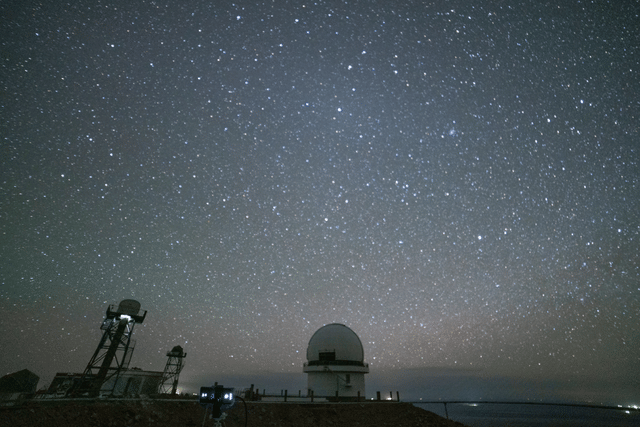Science
China's Powerful Wide Field Survey Telescope To Begin Operations In September
- Broadly, the Wide Field Survey Telescope will cover the areas of time-domain astronomy, galaxy and cosmology, the Milky Way, and the solar system.

China's Wide Field Survey Telescope (WFST) (Image: University of Science and Technology of China)
China's Wide Field Survey Telescope (WFST), the largest time-domain survey facility in the northern hemisphere, has begun its engineering debugging and pilot observation process.
The Qinghai Station under the Purple Mountain Observatory (PMO) of the Chinese Academy of Sciences made the announcement on Monday (4 September) and reported by Chinese media
Equipped with a 2.5-metre-diameter primary mirror and a prime-focus camera with a large field of view, the WFST is said to be one of the most powerful transient survey facilities of the 2020s.
The telescope made its inaugural commissioning observations on 16 August.
At the time, it was concluded that the telescope’s commissioning work needs a "substantial amount of intensive effort to ensure that its performance aligns with the theoretical design’s highest standards."
Reports now say the telescope is scheduled to be officially operational by mid-September.
Various science goals have been outlined for the WFST.
Broadly, it will cover the areas of time-domain astronomy, galaxy and cosmology, the Milky Way, and the solar system.
More specifically, the 2.5 m optical telescope will aim to survey the northern sky to explore the variable universe and catch time-domain events like supernovae and active galactic nuclei.
Its surveys will complement those of the Vera C Rubin Observatory, previously known as the Large Synoptic Survey Telescope (LSST), which monitors the southern sky.
The WFST has set out to find and track 10 lakh solar system objects for a comprehensive view of the solar system and its evolution.
It will also seek out planets or their moons in the Kuiper Belt and beyond.
The Kuiper belt is a flat ring of small icy bodies that circle the Sun beyond the orbit of the planet Neptune.
The telescope will also be used to obtain data which can help precisely map structures of the Milky Way and the nearby universe.
The WFST is situated at the Lenghu astronomical observation base in Qinghai Province, northwest China.
It has been under construction since July 2019 through a collaboration between the University of Science and Technology of China and the PMO.
Situated at an average altitude of about 4,000 m, the Lenghu base has emerged as one of the premier observatory sites in Eurasia.
This is attributed to its unique conditions, including sparse vegetation, low rainfall, and minimal light pollution.
Lenghu is hailed as "the most Mars-like place on the Earth," according to the Chinese Academy of Sciences.
Since its establishment in 2017, the base has successfully accommodated 12 telescope projects, with a significant investment of 2.7 billion yuan (approximately Rs 31 billion).
Support Swarajya's 50 Ground Reports Project & Sponsor A Story
Every general election Swarajya does a 50 ground reports project.
Aimed only at serious readers and those who appreciate the nuances of political undercurrents, the project provides a sense of India's electoral landscape. As you know, these reports are produced after considerable investment of travel, time and effort on the ground.
This time too we've kicked off the project in style and have covered over 30 constituencies already. If you're someone who appreciates such work and have enjoyed our coverage please consider sponsoring a ground report for just Rs 2999 to Rs 19,999 - it goes a long way in helping us produce more quality reportage.
You can also back this project by becoming a subscriber for as little as Rs 999 - so do click on this links and choose a plan that suits you and back us.
Click below to contribute.
Latest